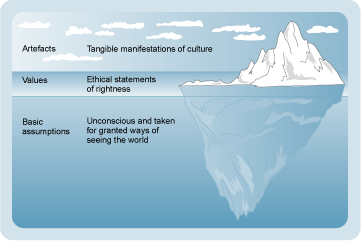7 Developing an effective team culture
The concept of culture can be understood in many ways. It is often one of those things that you recognise when you see it yet can be problematic to define clearly.
Perhaps the most straightforward definition of culture is that proposed by Deal and Kennedy (1982), who asserted that culture is ‘the way we do things around here’.
Intuitively this might make sense. You might know, for example, that titles for ranks or positions should be used in particular situations, or that in some contexts certain dress is required. Equally, you might have an unstated routine that your team always goes for lunch together at a certain time each day and always sits at the same table. All of these things are aspects of culture.
Yet the very simplicity of this definition masks the underlying complexity of organisational or community culture. Culture can exist at different levels and in different ways within an organisation, or the community, or the people they serve, relating to a range of both tangible and intangible elements, as the iceberg model of culture developed by Edgar Schein, shown in Figure 6, demonstrates.
Schein’s iceberg model (Schein, 1992) is useful in that it illustrates that some cultural aspects of an organisation are visible while some are hidden and difficult for outsiders or even new members of an organisation to interpret. Examples of visible cultural aspects include written documents – strategic plans, job descriptions and disciplinary procedures. Less visible, however, are a culture’s values, beliefs and norms, which can be much harder to identify and interpret. The key to Schein’s model is that, through analysing the three levels shown in Figure 6, a better understanding of the different components of culture in organisations can be achieved.

